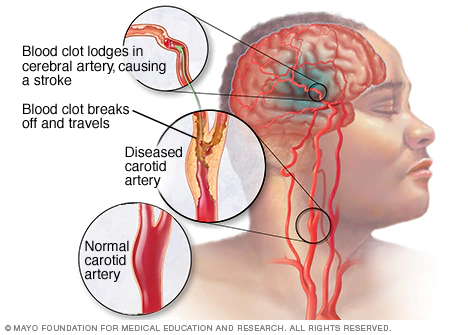A stroke occurs when the blood supply to a part of the brain is interrupted or reduced, depriving the brain tissue of oxygen and nutrients. This can lead to brain damage or even death.
Causes: There are two main types of strokes: ischemic stroke and hemorrhagic stroke. Ischemic stroke occurs when a blood vessel in the brain becomes blocked, typically by a blood clot. Hemorrhagic stroke occurs when a blood vessel in the brain ruptures, causing bleeding in or around the brain.
Risk factors for stroke include high blood pressure, smoking, diabetes, high cholesterol, obesity, and a family history of stroke. Lifestyle factors such as diet, exercise, and stress management can also impact stroke risk.
Symptoms: The symptoms of stroke can vary depending on the area of the brain affected and the severity of the damage. Common symptoms include sudden weakness or numbness in the face, arm, or leg, especially on one side of the body, difficulty speaking or understanding speech, vision problems, severe headache, and difficulty with balance or coordination.
Treatment: Treatment for stroke depends on the type of stroke and the time since the onset of symptoms. In some cases, medication can be used to break up blood clots or control bleeding. In more severe cases, surgery may be necessary to remove blood clots or repair damaged blood vessels.
Rehabilitation: After a stroke, rehabilitation is an important part of the recovery process. This may involve physical therapy, occupational therapy, speech therapy, and other forms of rehabilitation to help the person regain function and independence.
Prevention: Preventing stroke involves managing risk factors such as high blood pressure, high cholesterol, and diabetes, as well as adopting a healthy lifestyle, including regular exercise, a healthy diet, and avoiding smoking.
In conclusion, a stroke occurs when the blood supply to a part of the brain is interrupted or reduced, leading to brain damage or death. There are two main types of strokes, ischemic and hemorrhagic, each with different causes and treatment options. Early detection and treatment are crucial in reducing the impact of stroke on the brain and increasing the chances of recovery. Adopting a healthy lifestyle and managing risk factors can also help prevent stroke.

